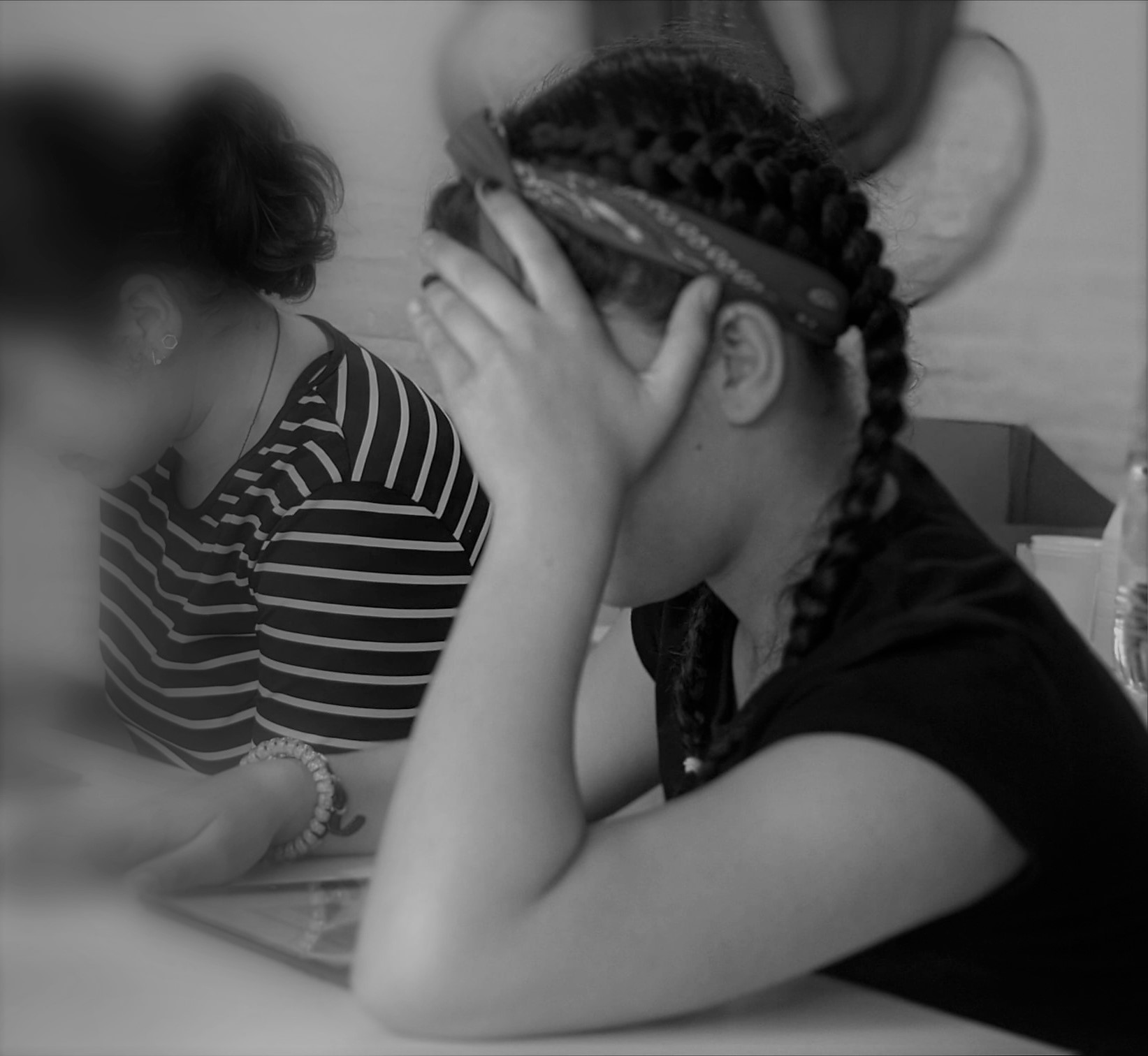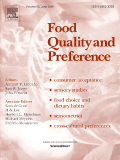New paper: Can children use temporal sensory methods to describe visual and food stimuli?

18.05.2021 Blog , News , publication
Research suggests that children can use sensory temporal methods to describe visual stimuli, but refinements are needed for the characterization of food products.
Ana Laura Velázquez
Universidad de la República Uruguay
There is no doubt that children’s input is essential to develop successful healthy products. Sensory methods need to be adapted to children’s cognitive abilities to understand how they perceive food. Although several methods have been successfully applied with children, temporal sensory methods have been rarely used. These methods are used to study how we perceive changes in the sensory characteristics of a food product from the moment we place them in our mouth until after we swallow them. A study was conducted to explore children’s ability to use two popular temporal methods, temporal check-all-that-apply (TCATA) and temporal dominance of sensations, to describe visual and food stimuli. Results showed that children understood the rationale behind both methods and could use them to describe the how colored circles changed over time. However, children faced challenges for using the methods to describe vanilla milk desserts. Although they were able to describe the sensory characteristics of the products, they were not able to accurately describe how these characteristics changed over time during consumption. These results suggest that further methodological refinements are needed to use TCATA and TDS to characterize food stimuli with children.
Reference
Velázquez, A. L., Vidal, L., Varela, P., & Ares, G. (2020). Can children use temporal sensory methods to describe visual and food stimuli? Food Quality and Preference, 86, 104002. https://doi.org/10.1016/j.foodqual.2020.104002
Children, ESR11, sensory characterisation, TCATA, TDS, temporal methods
- Helping children eat healthy
06.07.2022 - A message for the industry: Less sugar is possible
06.07.2022 - Edulia Conference - Florence June 2022
06.07.2022 - New paper: Development of an emoji-based self-report measurement tool to measure emotions elicited by foods in preadolescents
06.07.2022 - Final Consortium Meeting and General Assembly
06.07.2022 - New thesis: The Role of Emotions, Personality Traits, and Sensory Sensitivity in Preadolescents’ Food Preferences
08.06.2022 - Extended deadline for abstracts to Edulia conference
12.05.2022 - Paper about Weight Status and Mental Well-Being Among Adolescents
21.04.2022 - New thesis: New methodologies in sensory and consumer research with preadolescents to guide product development of healthy, child-centered food
11.03.2022 - New thesis: Formation of healthy eating habits in children aged 0-3 years: supporting the development of public health guidelines dissemination material and its evaluation with parents and healthcare professionals
11.03.2022 - New paper: Listening to children voices in early stages of new product development through co-creation – Creative focus group and online platform
02.03.2022 - New paper - Capturing food-elicited emotions: Facial decoding of children’s implicit and explicit responses to tasted samples
02.03.2022 - Expanding food worlds of pre-adolescents: Practical guidelines to support pre-adolescents in eating healthy outside home in a tempting food environment
02.03.2022 - New paper: Parental feeding practices and parental involvement in child feeding in Denmark: gender differences and predictors
08.02.2022 - New paper - Parenthood as a window of opportunity for dietary changes: perspectives from Uruguayan parents
08.02.2022 - Edulia Conference programme
16.06.2022 - Edulia final conference postponed
20.01.2022 - Make the sensory testing fun for preadolescents! The use of gamification in the sensory test setup with children
17.12.2021 - New paper: Young children’s eating in the absence of hunger: links with children’s control abilities, their weight status, and maternal controlling feeding practices.
17.12.2021 - Measuring basic tastes and fattiness sensitivity in preadolescents and the relation to children’s food liking
17.12.2021 - New thesis: Transitioning to parenthood: Factors influencing new parents’ healthy eating behaviours and strategies for change
07.12.2021 - A remote sensory testing during Covid-19 pandemic with preadolescents
07.12.2021 - New Paper: Measuring basic tastes and fattiness sensitivity in preadolescents and the relation to children’s food liking
07.12.2021 - New Paper: Preadolescents’ taste sensitivity is associated with their eating behaviour
07.12.2021 - Edulia Conference – Bringing down barriers to children’s healthy eating, 21st-22nd June
31.01.2022 - New thesis: Peer, sibling and social media influence on preadolescent children’s healthy eating behaviour
17.11.2021 - New thesis: Taste sensitivity in pre-adolescent children
23.11.2021 - New paper: Does Responsiveness to Basic Tastes Influence Preadolescents’ Food Liking? Investigating Taste Responsiveness Segment on Bitter-Sour-Sweet and Salty-Umami Model Food Samples
16.11.2021 - New PhD on maternal and paternal feeding practices
25.10.2021 - New thesis on conceptual knowledge about food and links to food rejection
15.11.2021 - New paper: Contrasts and ambivalences in French parents’ experiences regarding changes in eating and cooking behaviours during the COVID-19 lockdown.
02.11.2021 - First PhD in Edulia on sugar reduction in dairy products targeted at children
21.10.2021 - New paper: Children’s sweet tooth: Explicit ratings vs. Implicit bias measured by the Approach avoidance task (AAT)
02.11.2021 - New paper: Information seeking of French parents regarding infant and young child feeding: practices, needs and determinants
10.09.2021 - New paper: How do French parents determine portion sizes for their pre-schooler? A qualitative exploration of the parent-child division of responsibility and influencing factors
10.09.2021 - New paper: The Perceptions and Needs of French Parents and Pediatricians Concerning Information on Complementary Feeding
02.08.2021 - New paper: Are food parenting practices gendered? Impact of mothers' and fathers' practices on their child's eating behaviors.
30.06.2021 - New paper: The influence of label information on the snacks parents choose for their children: Individual differences in a choice based conjoint test
30.06.2021 - New paper: "Do children favor snacks and dislike vegetables? Exploring children’s food preferences using drawing as a projective technique. A cross-cultural study"
21.06.2021 - New paper: The role of peers, siblings and social media for children’s healthy eating socialization: a mixed methods study
21.06.2021 - New paper: Dutch Preadolescents’ Food Consumption at School
18.05.2021 - New paper: The Meaning of Emoji to Describe Food Experiences in Pre-Adolescents
18.05.2021 - New paper: Strawberries and Cream: The Relationship between Food Rejection and Thematic Knowledge of Food in Young Children
07.04.2021 - Award to Edulia Early stage researcher
19.05.2021 - Edulia webinar from Institut Paul Bocuse: Cognitive and Social variables modulating food rejection (or acceptance) in children.
19.04.2021 - New paper: Child eating behaviors, parental feeding practices and food shopping motivations during the COVID-19 lockdown in France: (How) did they change?
05.02.2021 - Oscar and Sophies’ vegetable friends
25.02.2021 - Edulia webinar on children and healthy eating - with video from the seminar
25.02.2021 - Video of father & daughter enjoying the superpowers of healthy eating!
10.02.2021 - New paper: Children as food designers: The potential of co-creation to make the healthy choice the preferred one
19.01.2021 - Secondment at the MAPP centre, Aarhus University, Denmark – Kaat Philippe (ESR7)
05.02.2021 - New paper: Perspectives on sugar consumption expressed on social media by French-speaking and Danish-speaking parents
13.01.2021 - Infographics: Recommendations on how to tackle nutrition issues among parents
01.02.2021 - New paper: Significant sugar-reduction in dairy products targeted at children is possible without affecting hedonic perception
19.01.2021 - Impressions from Eurosense – A sense of Innovation
21.12.2020 - New paper: Do Basic Tastes and Fattiness Sensitivity Influence Food Liking in Preadolescents?
13.10.2020 - Starting a new position during a pandemic
09.12.2020 - ESR9 Peer and sibling influence on children’s healthy eating behavior (preadolescents)
07.09.2018 - Get to know the early stage researchers - interview with Carina Mueller - new ESR in the project
22.10.2020 - New paper: Preadolescents’healthy eating behavior:peeping through the social norms approach
15.09.2020 - An Early Stage Researcher’s diary during corona times
22.10.2020 - New paper: How children approach a CATA test influences the outcome. Insights on ticking styles from two case studies with 6–9-year old children
20.08.2020 - What it is like to be Early Stage Researcher during the Covid-19-situation
17.09.2020 - PhD life: some anecdotes on struggles, growth and passion from ESR8-Andreia
13.10.2020 - New paper: Early parenthood can represent either a downturn or an opportunity for healthy eating behaviours: Study results with practical guidance for health professionals
12.05.2020 - New paper: Children’s selection of emojis to express food-elicited emotions in varied eating contexts
12.05.2020 - Foodwiser: A podcast with Edulia insights and beyond
01.09.2020 - Two-year position open for early stage researchers (ESR)
03.07.2020 - Impact of parenthood on eating behaviours: practical guidance for health professionals
12.05.2020 - New paper: The influence of peers′ and siblings′ on children’s and adolescents′ healthy eating behavior
24.03.2020 - DO WE EAT HEALTHIER AFTER BECOMING PARENTS?
11.05.2020 - Smell Detection Game and the Flavor vs Taste Experiment - different languages
03.04.2020 - Infographics: QUALITY FOOD TIME IN QUARANTINE - different languages
03.04.2020 - New paper: The ability of 10–11-year-old children to identify basic tastes and their liking towards unfamiliar foods
24.03.2020 - Edulia presents: QUALITY FOOD TIME IN QUARANTINE
02.04.2020 - Secondment at Santé publique France - Sofia de Rosso (ESR6)
24.03.2020 - How is Edulia affected by the Corona situation?
24.03.2020 - Paper on why children accept or reject foods
06.12.2019 - Edulia fun facts
24.03.2020 - Experiences ESR7 Kaat Philippe - Secondment Institut Paul Bocuse, Ecully, France
16.03.2020 - Cross-modal interactions as a strategy for sugar reduction in products targeted at children: Case study with vanilla milk desserts
10.02.2020 - Did you know that Norwegian children eat ramen after school?
25.11.2019 - Children preferred to be product developers instead of helping an alien
20.11.2019 - Cross-cultural data collection on new parents’ eating behaviors
25.10.2019 - School-based interventions to promote water consumption
04.10.2019 - Sweets as comfort: facing the post-partum period
09.09.2019 - A Fear of Food? Breaking barriers in children’s mistrust for food
05.09.2019 - The Role of Emotions in Children’s Food Preferences
12.08.2019 - Your Diet Means More Than You Think.
03.07.2019 - On the Creation of Conscious Eaters
03.07.2019 - ESRs receive prices at conferences and workshops
12.06.2019 - What do they see in You?
24.06.2019 - Early stage researchers have been on secondments
07.06.2019 - Sweet Sweet Dairy!
07.06.2019 - Pre-adolescents don’t know what parsnip is
04.06.2019 - Role models in children’s eating behavior
24.05.2019 - Early stage researcher activities in Edulia
24.05.2019 - ESR8 Factors influencing new parent’s healthy eating behavior (preschoolers)
07.09.2018 - Why children like candies and tend to reject broccoli?
24.05.2019 - How fruit consumption at schools can be increased through nudging
25.04.2019 - Guiding parents through the initiation of complementary feeding
24.04.2019 - Children spent a huge amount of time with their friends and peers and the relationship with them have a significant influence on their development.
25.04.2019 - How can sweet taste preferences be changed?
24.04.2019 - The earlier the better
24.04.2019 - Taste detectives for a day
12.04.2019 - Children as co-creators of a healthy food product
23.04.2019 - Get to know the early stage researchers - interview with Abigail (ESR10)
24.01.2019 - Get to know the early stage researchers - interview with María (ESR5)
07.02.2019 - Get to know the early stage researchers - interview with Sofia (ESR6)
15.01.2019 - ESR11 Strategies to reduce the sugar content of dairy products targeted at children
07.09.2018 - ESR7 Impact of caregivers’ feeding practices on children’s eating behaviours and intake regulation (preschoolers)
07.09.2018 - Get to know the early stage researchers - interview with Kaat (ESR7)
16.01.2019 - Get to know the early stage researchers - interview with Andreia (ESR8)
10.01.2019 - ESR6 Formation of healthy eating habits in children aged 0-3: development of public health guideline dissemination material and effect on parental feeding practices and on children’s eating behaviour.
07.09.2018 - Get to know the early stage researchers – interview with Roselinde (ESR4)
09.10.2018 - Get to know the early stage researchers – interview with Martina (ESR1)
09.10.2018 - ESR10 Food rejections in preschoolers: where it comes from and how it can be modulated (preschoolers)
07.09.2018 - Get to know the early stage researchers – interview with Ana (ESR11)
01.10.2018 - Get to know the early stage researchers - interview with Julia (ESR3)
28.09.2018 - ESR1 New methodologies in sensory and consumer research with preadolescents to guide product development of healthy, child-centred food
07.09.2018 - ESR5: Sweet taste perception in young children
07.09.2018 - Get to know the early stage researchers - interview with Ervina (ESR2)
28.09.2018 - ESR3 The role of emotions, personality traits and sensory sensitivity in food preferences in children (preadolescents)
07.09.2018 - ESR2 Importance of sensory sensitivity for food perception among children (preadolescents)
07.09.2018 - ESR4 Nudging children towards healthier food choices (preadolescents)
07.09.2018 - Get to know the early stage researchers - interview with Tija (ESR9)
16.10.2018 - Current trends in children research
15.10.2018 - Edulia in prime time TV in Norway
16.04.2018 - Edulia positions
12.03.2018 - How Can Children be Encouraged to Eat Healthily?
14.03.2018 - WP2 Sensory Perception & Food Choice
08.03.2018 - WP3 Methods development
12.03.2018 - WP4: Healthy food product development
12.03.2018 - WP5: Pleasure, satiation and overeating
12.03.2018 - WP6: Social influences on children's healthy eating habits: impact of parenting and of interactions with peers
12.03.2018 - WP7: Nudging and social marketing for change
12.03.2018 - Bringing down barriers to children's healthy eating
04.12.2017


